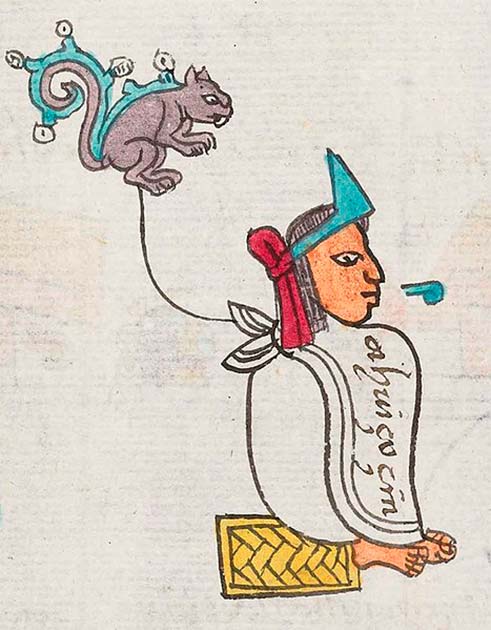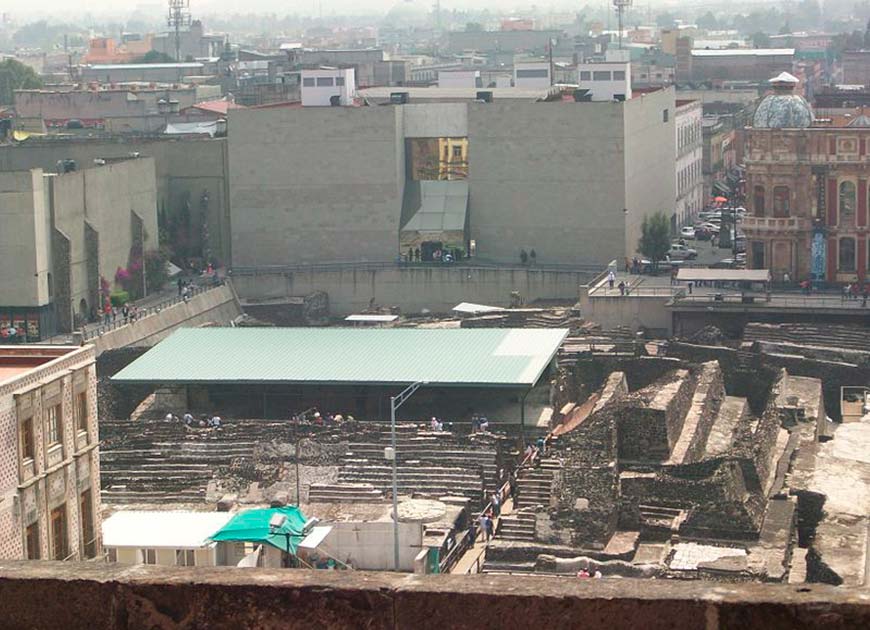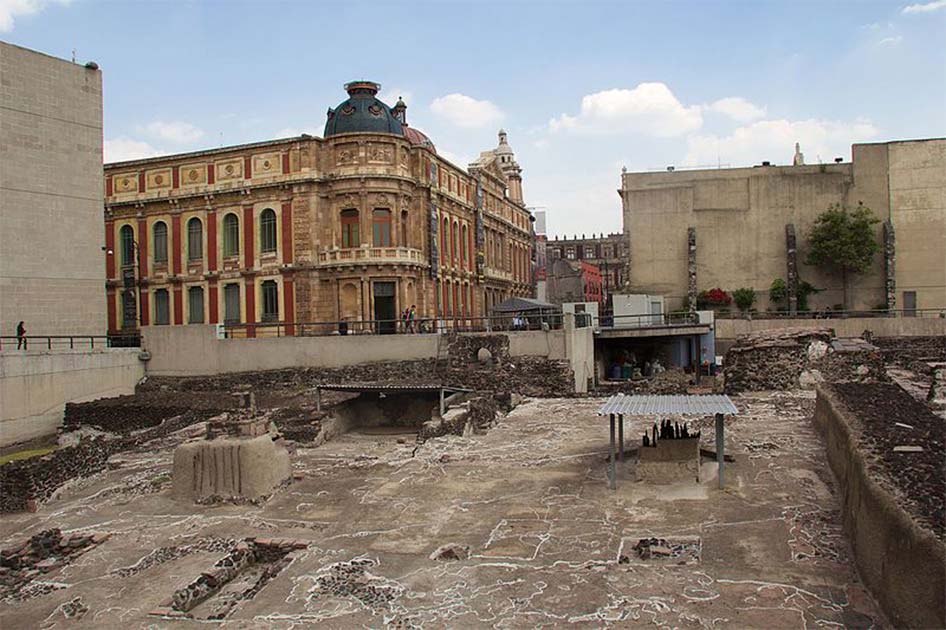Ahuitzotl is perhaps one of the best-known and greatest military leaders of pre-Columbian Mesoamerica. He was the eighth Aztec ruler and the first great chief, Huey Tlatoani, of the city of Tenochtitlan.
His name is said to have meant watery thorn and is likely derived from the water opossum found in the area. It is supposed that he was the first chief to express his superiority and dominance over the other cities in the Aztec Empire, also known as the Triple Alliance, and is responsible for much of the expansion of the Aztecs through Mexico. He was able to consolidate his power when he took the throne in 1486 or the year 7 Rabbit in the Aztec Calendar.
But his tomb has never been found. Until now.
High King of the Aztecs
Ahuitzotl began his reign by suppressing a rebellion that had been brewing in the Huastec region. He followed this victory by doubling the size of the lands under Aztec control. He was able to conquer many people from the Pacific coast of Mexico down to the western part of Guatemala including the Zapotec and Mixtec.
In addition to this, he supervised a large rebuilding of the major town of Tenochtitlan and expanded the great pyramid, Templo Mayor, in 1487. Ahuitzotl possessed an incredible military capacity which drove the Aztec empire to expand and thrive despite the tumultuous reigns that had gone before him.
Through his conquests, he was able to take areas that were rich in goods and wealth. He coveted goods such as cocoa, rich feathers, and precious stones. All the while he fortified his borders to avoid attack from his near rival the Tarascan State.

The growth of the city in Tenochtitlan and a need for a greater water supply pushed Ahuitzotl to construct an aqueduct going to the springs of Coyoacan. However, because these were poorly planned and executed, he actually caused a large flood.
- The “Hand Made Mountain”: Cholula, the Largest Pyramid in the World
- Why was Teotihuacan Abandoned So Suddenly?
According to legend, it was this disaster that killed him when he suffered a strong blow to the head during the deluge. Ahuitzotl died in the Aztec year 10 Rabbit (1502) and was succeeded by his nephew called Moctezuma II.
His name derived from the animal ahuizotl which the Aztecs considered to be a legendary creature. It was more than a mythical representation of a king. Researchers have also suggested that he oversaw the introduction of the great-tailed grackle into the Valley of Mexico which if true is the earliest documented case of human-mediated bird introduction in the entire Western Hemisphere.
Discovery of a Tomb
So, an important guy with a lot of hobbies, and clearly foundational to the Aztecs. It is therefore a little strange that it has been unknown for many years where Ahuitzotl may have been buried but Mexican archaeologists using ground-penetrating radar have finally discovered underground chambers that they believe may contain his remains.
Astonishingly, this would also be the first tomb of any Aztec ruler to have been found. As far as archaeology goes, this would be an incredible find that could provide a glimpse into the Aztec civilization when it was at its height, before the Spanish Conquest.
Archaeologists have been able to use accounts written by Spanish priests to find an area that it is suggested the Aztecs used for cremation and burial. The difficulty lies in that the Spanish conquerors of the “New World” built over the top of Aztec buildings and over ceremonial centers which are also valuable to the archaeological narrative.
It would not be right to knock them down today in order to pursue another find. Fortunately, in 1985, an earthquake knocked down a building that allowed archaeologists to explore the site nearby Mexico City’s Zocalo Plaza. This is situated between the cathedral and the ruins of the Templo Mayor Pyramid.

Whilst investigating the site, researchers have found what appears to be a six-by-six-foot (1.8 by 1.8 m) entryway into a tomb approximately 15 feet (4.6 m) below the ground. It has been filled up with water, mud, and rocks which has hampered the digging.
As the area stabilized, it has allowed them to dig delicately once again as they are suspended from slings. Local government archaeologist Leonardo Lopez Lujan said they are excavating very slowly because of the importance of the find; they want to investigate and record everything.
It is a new situation for them and because of this, they have no idea what is down there. The hope is that in the dark, damp, and low-ceilinged space, the ashes of Ahuitzotl himself will be found untouched from where they were laid to rest in 1502.
Radar has indicated that there are up to four chambers and many lavish finds have been located. They are likely offerings to the gods such as vases, ornaments, gems, and perhaps objects that he will have used in his life.
Because of the fact that the tomb was flooded, many of the finds are in quite good condition. The water combined with a lack of oxygen means that materials like wood and bone survive longer and face less deterioration. The finds will hopefully reveal more about kingship, burial practices, and the empire of the Aztecs that was nearly wiped out when Europeans landed in 1492.

Researchers are convinced that the tomb will be for Ahuitzotl and perhaps even his brothers. The site lies directly below a huge carved monolith representing the Aztec god of the earth known as Tlaltecuhtli.
This god was believed to devour the dead before giving them new life. Often depicted as a large-clawed woman with a stream of blood flowing from her mouth was used by the Aztecs to bury their dead.
She was so feared that she was more often than not buried facing downwards. This one though was discovered facing towards the sky and on the right foot held a rabbit with 10 dots indicating the year 10 Rabbit, the year Ahuitzotl died.
The archaeologists and many Mexcians hope that this grave is the site that 16th-century chroniclers discussed. There is a written record of the burial of three Aztec kings all of whom ruled between 1469 and 1502.
These were Ahuitzotl, and his two brothers in succession. The account tells of opulent offerings and the hearts of sacrificed slaves being buried within them. It is hoped that with the written and archaeological evidence, it can be confirmed that the first Aztec tomb has been found.
Top Image: Ahuitzotl, eighth king of the Aztec and his flying bell-adorned water opossum of the same name. Source: John Carter Brown Library / Public Domain.
By Kurt Readman